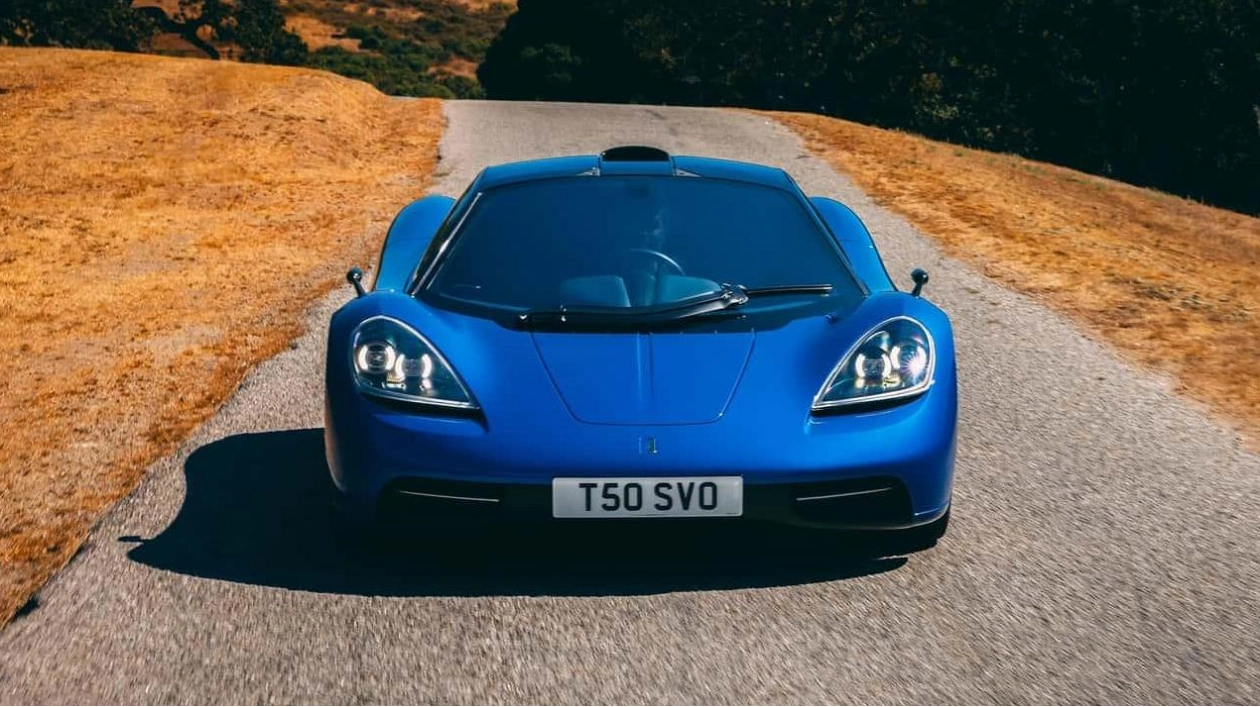“I’ll be up at 6:00 a.m., already receiving texts from Gordon for an hour,” says Dario Franchitti, a development driver for Gordon Murray Automotive's (GMA) awe-inspiring T.50 hypercar. “‘What about this? What if we did this?’” Murray queries Franchitti. Despite the T.50's development being technically complete (25 out of 100 planned cars have been delivered), Murray's mind continues to refine ideas in the present and for GMA's future. “We have plans until 2040,” Franchitti reveals. The three-time Indy winner and four-time IndyCar champion has been a pivotal member of the GMA development team. Contrary to expectations, having a race car driver on board has not resulted in a nightmarish road car. Franchitti and Murray share a vision: to create an engaging and thrilling road car, but above all, a fun one. It’s nearly impossible to avoid comparisons between the T.50 and Murray’s other masterpiece, the McLaren F1. Both are lightweight three-seaters with bespoke V-12s, manual gearboxes, and a focus on sublime road manners over sheer speed. The F1's status as the world’s fastest car for years was a fortunate byproduct, sparking a horsepower and top speed race that continues today.
Despite supercars becoming quicker, faster, and more capable, driver engagement has declined. The T.50 aims to counteract this, built with modern components. Standing next to the T.50, its small size is immediately apparent. It's Boxster-sized and weighs 2200 pounds, slightly less than the F1. This is remarkable for a modern car, considering the additional safety equipment required today. The T.50's 4.0-liter Cosworth V-12 produces 654 hp, slightly more than the F1. However, the T.50’s engine reaches its limiter at 12,400 rpm, promising an extraordinary experience. Inside, the T.50 is snug, with the driver—Franchitti in this instance—seated front and center, passengers behind. At six feet tall, I struggle to get comfortable in the rear seat, ducking to avoid hitting my head on the closing door. During our brief drive, Franchitti demonstrates the T.50's usability and ride quality, easily navigating speed bumps and steep driveways without scraping. The car’s engine impresses with its tractability, even at 20 mph in 5th gear, thanks to its lightweight internals and lack of a flywheel.
Carmel Valley Road showcases the T.50's capabilities. Despite the poor pavement, the T.50 excels with its passive dampers and Michelin Pilot Sport 4S tires. Franchitti emphasizes the focus on fun, occasionally dialing back the car’s stiffness to align with the T.50's goals. The passenger experience differs from the driver’s due to varying seating positions relative to the axles. The T.50 is tuned for the driver, with different throttle maps adjusting aggression for various driving styles. Cosworth’s engine delivers both manic power and smooth tractability, enhanced by its manual gearbox. A ride-along in such a car offers limited insight, but Franchitti highlights improvements over the F1 in brakes and headlights. The T.50 uses off-the-shelf carbon ceramic brakes, chosen for their performance and reduced weight. As we discuss the car’s details, it’s evident how much attention has been given to every aspect. The rear fan, often seen as a gimmick, enhances stability during high-speed maneuvers. The interior, crafted with precision, features tactile controls and minimal screens.
Franchitti notes that GMA's customers range from their mid-twenties to mid-eighties, all buying the car to drive, not to display. Gordon aims to award the owner who drives the most miles each year, encouraging owners to use their cars. Ultimately, they built this supercar to be driven, as it should be.






